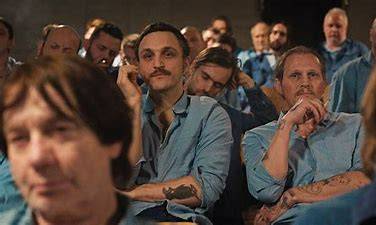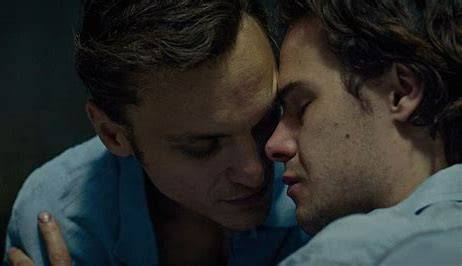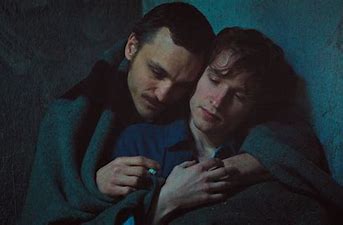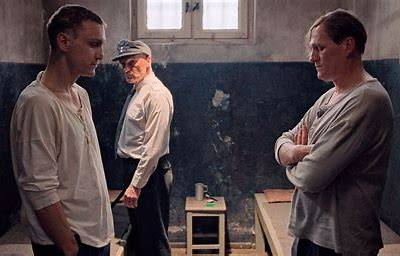German actor Franz Rogowski is one of the most empathic actors out there. He may be the best actor in the world today. In the Austrian film “Great Freedom,” he plays a German who spends his life in Prison because of his sexuality.
The Austrian film “Great Freedom” is my fourth Rogowski sighting following his two movies with Christian Petzold (“Transit” and “Undine”) and that strange horror movie “Luzifer.” Having made the Oscar shortlist for Best International Film, “Great Freedom” had a brief theatrical run and is now available for streaming.

Paragraph 175
It is 1945, and after the liberation of the concentration camp in which he was an inmate, Hans (Rogowski) is transferred directly to Prison under the terms of the notorious German Paragraph 175, which criminalized sex between men.

Crosscutting
The movie deals with three of Hans’ incarcerations, 1945, 1957 (with his partner), and after the 1968 cottaging incident, which opens the film. Meise intercuts scenes from these various periods so that, for instance, you see Hans entering solitary confinement in 1945 and exiting in 1957 or 1968. Although this technique is, at first, exciting, it eventually becomes tiresome and confusing.

The Space and the Time
On the other hand, Meise directs what must be some of the most beautiful and heartfelt scenes ever captured on film between two men in love or lust. That includes Hans and his doomed partner Oskar (Thomas Prenn) in 1957 and between Hans and a sensitive young teacher, Leo (Anton von Lucke), who was also a victim of the cottage sting in 1968. In the latter case, Hans even incriminates himself further so that Leo will get out early. These scenes are also notable for the ingenious ways Hans and his fellow prisoners find the space and the time to be alone together.

True Love at Last
Hans’s most complex relationship is with Viktor (Georg Friedrich), a lifer (murder and drugs) with whom he shares his cell on several occasions. Viktor considers himself to be straight, but eventually, he and Hans have sex regularly, and they fall in love.
Then, suddenly, it is 1969, and Paragraph 175 is struck down. Sex between men is no longer illegal, and Hans is released.
But he does not want to leave. The person he loves is in Prison and has had no life – or at least we have seen no evidence of life outside of Prison. After he exits the Prison’s walls and leaves his partner behind, he goes to his first gay bar. The bar is called “Great Freedom,” and as Hans, wearing a mischievous smile, makes eye contact with another patron, Meise’s somnambulistic camera guides us into a labyrinth of back rooms, many of which have, ironically, a prison motif in which there is an orgy of gay sex. Hans looks around, a voyeur, but does not participate. The separation of Hans’s body and mind after all those years of incarceration is emphasized by Meise’s inspired use of French chanteur Mouloudji’s gorgeous romantic ballad, “L’amour, L’Amour, L’Amour” to accompany and contrast all that moaning and fucking going on in the background. At this moment, as another song says, Hans only has eyes for Viktor.
https://thebrownees.net/essay-one-1-2-65-queer-films-under-the-hays-code-1934-1967/
65 Queer Films Made Under the Hays Code (1934-1967) Part One. – TheBrownees
65 Queer Films Made Under the Hays Code (1934-1967). Part Two. – TheBrownees
65 Queer Films Made Under the Hays Code (Table) – TheBrownees
45 Queer Films from 1967-1976: Queer Cinema Comes Out – TheBrownees

















